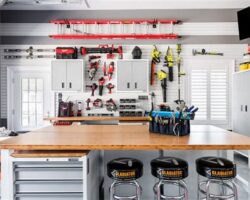Are you considering hosting a workshop but unsure where to start? Designing the perfect workshop requires careful planning and consideration of various factors to ensure it’s effective and engaging for your participants. In this blog post, we’ll explore tips and ideas for creating a successful workshop that meets the needs of your target audience. From identifying the objective of the workshop to choosing the right venue and evaluating its effectiveness, we’ll cover everything you need to know to design a workshop that leaves a lasting impression. Whether you’re a seasoned workshop facilitator or a first-time organizer, these insights will help you plan and execute a workshop that achieves its goals and leaves participants feeling inspired and motivated. Let’s dive in and learn how to create a workshop that makes a real impact.
Identifying the objective of the workshop
When organizing a workshop, the first step is to identify the objective of the workshop. This involves understanding the purpose of the workshop and what you hope to achieve through it. Whether it’s to educate, train, brainstorm, or strategize, having a clear objective is essential to planning a successful workshop.
Once the objective is identified, it’s important to define it in clear and specific terms. This ensures that everyone involved in the workshop, including the organizers, speakers, and participants, are on the same page and working towards a common goal.
Furthermore, identifying the objective allows for the creation of actionable outcomes. This means outlining the specific results or changes that are expected to occur as a result of the workshop. Whether it’s implementing new strategies, solving a particular problem, or gaining insights, these outcomes should be clearly defined and measurable.
Overall, identifying the objective of the workshop sets the stage for the entire planning and execution process, guiding decisions on content, format, and activities to align with the overall purpose and goals.
Understanding target audience and their needs
Understanding the target audience and their needs is crucial for the success of any workshop. It is important to have a clear understanding of who will be attending the workshop, their background, level of knowledge, and their expectations. This information will help in tailoring the content and activities to meet their specific needs and ensure that the workshop is relevant and valuable to them.
One way to understand the audience is by conducting surveys or interviews to gather information about their interests, challenges, and learning preferences. By doing so, workshop organizers can gain insights into what the participants are looking to gain from the workshop and what they hope to achieve.
It is also important to consider the diversity within the audience and to ensure that the workshop content and activities are inclusive and accessible to everyone. Factors such as language, cultural differences, and accessibility requirements should be taken into account to create an inclusive environment where all participants feel welcome and valued.
By understanding the target audience and their needs, workshop organizers can design a more effective and engaging workshop that is tailored to the specific requirements of the participants, leading to a more impactful and rewarding experience for everyone involved.
Developing a clear workshop agenda
One of the most crucial aspects of organizing a successful workshop is developing a clear workshop agenda. An agenda serves as the roadmap for the entire workshop, providing structure and organization for both the facilitator and the participants. It ensures that the goals and objectives of the workshop are clearly outlined and that all necessary topics and activities are covered within the allocated time frame.
When developing a clear workshop agenda, it is essential to start by clearly defining the objectives of the workshop. What is the main purpose of the workshop and what specific outcomes should be achieved by the end of it? Understanding these objectives is key to structuring the agenda in a way that allows for the effective delivery of the content and activities that will help meet these goals.
Another important aspect of developing a clear workshop agenda is to consider the needs and expectations of the target audience. What are their specific challenges, interests, and learning preferences? By understanding the audience, it becomes possible to tailor the agenda to address their needs and ensure that the content is relevant and engaging for them.
Finally, developing a clear workshop agenda involves organizing the content and activities in a logical and coherent manner. This includes allocating appropriate time slots for each topic, allowing for breaks and transitions, and considering the flow of the workshop as a whole. A well-structured agenda not only keeps the workshop on track but also maximizes the impact of the content delivered.
Creating engaging and interactive activities
When planning a workshop, it’s important to consider engaging and interactive activities that will keep your audience interested and involved. One way to achieve this is by incorporating group discussions and brainstorming sessions, allowing participants to share their thoughts and ideas with one another. These activities encourage collaboration and interaction, making the workshop more enjoyable and valuable for everyone involved.
Another effective way to create engagement is by incorporating hands-on activities or interactive exercises that require active participation from the attendees. For example, you could design a role-playing scenario or a problem-solving activity that inspires critical thinking and teamwork. This not only breaks up the monotony of traditional lectures but also provides a more immersive experience for the participants.
Furthermore, utilizing technology and multimedia can enhance the engagement level of your workshop. This could include interactive presentations, videos, or online polls that encourage audience participation and provide a multi-sensory experience. By incorporating various forms of media, you can cater to different learning styles and keep the audience engaged throughout the workshop.
In summary, creating engaging and interactive activities is essential for the success of any workshop. By fostering collaboration, hands-on participation, and technological interaction, you can ensure that your audience remains attentive and invested in the content being presented.
Incorporating visual aids and multimedia
Incorporating visual aids and multimedia into a workshop can greatly enhance the learning experience for participants. This can include anything from PowerPoint presentations to videos, infographics, and other visual tools that help reinforce key concepts and engage the audience.
One of the main benefits of using visual aids is that they can help break up long periods of talking and maintain the interest of the participants. This can be particularly useful in workshops where complex or technical information is being presented.
When incorporating multimedia, it’s important to ensure that the material is relevant, high-quality, and adds value to the workshop. Videos, for example, can be a powerful way to illustrate real-world examples, demonstrate procedures or techniques, or share personal stories and testimonials.
It’s also important to consider the accessibility of visual aids and multimedia for all participants. This means taking into account any potential barriers such as language, hearing or vision impairments, and ensuring that alternative formats or accommodations are provided.
Choosing the right venue and setup
When choosing the right venue and setup for your workshop, it’s important to consider the specific needs and requirements of your audience. The venue should be easily accessible, comfortable, and conducive to learning. It should also be spacious enough to accommodate all participants and provide enough room for interactive activities and group discussions. Additionally, the setup of the venue, including the arrangement of chairs, tables, and any visual aids, should be carefully planned to maximize engagement and participation.
Another important factor to consider when choosing the right venue is the technical setup. Ensure that the venue is equipped with the necessary audio-visual equipment, such as projectors, screens, microphones, and sound systems. This will ensure that your workshop runs smoothly and that all participants can clearly see and hear the content being presented. If the venue does not have the necessary equipment, consider renting or bringing in your own to meet the needs of the workshop.
In addition to the physical setup of the venue, it’s also important to consider the overall atmosphere and ambiance. The venue should be free from distractions and conducive to learning and creativity. Natural lighting, comfortable seating, and a visually stimulating environment can all contribute to a positive workshop experience for participants. Consider the decor, layout, and overall feel of the venue to create a welcoming and inspiring setting for your workshop.
Finally, don’t forget to take into account any special requirements or accommodations that may be needed for your audience, such as accessibility for individuals with mobility challenges or dietary restrictions for catering. By carefully considering the specific needs and preferences of your audience, you can choose the right venue and setup that will ensure a successful and impactful workshop experience for all participants.
Evaluating and improving workshop effectiveness
Once a workshop has been successfully conducted, it is essential to evaluate its effectiveness in order to identify any areas for improvement. The evaluation process involves gathering feedback from participants to assess the impact of the workshop and to determine if the objectives were met.
Workshop effectiveness can be evaluated through a variety of methods, including surveys, interviews, and observation. Surveys can provide valuable quantitative data, while interviews allow for in-depth qualitative insight into participants’ experiences. Observation of participants during the workshop can also yield valuable information about their engagement and interaction.
Improving the effectiveness of a workshop involves using the feedback gathered during the evaluation process to make necessary adjustments for future workshops. This may include revising the content, structure, or delivery method of the workshop to better meet the needs of the target audience.
Evaluating and improving workshop effectiveness is an ongoing process that requires careful consideration and a commitment to constant improvement and innovation.





